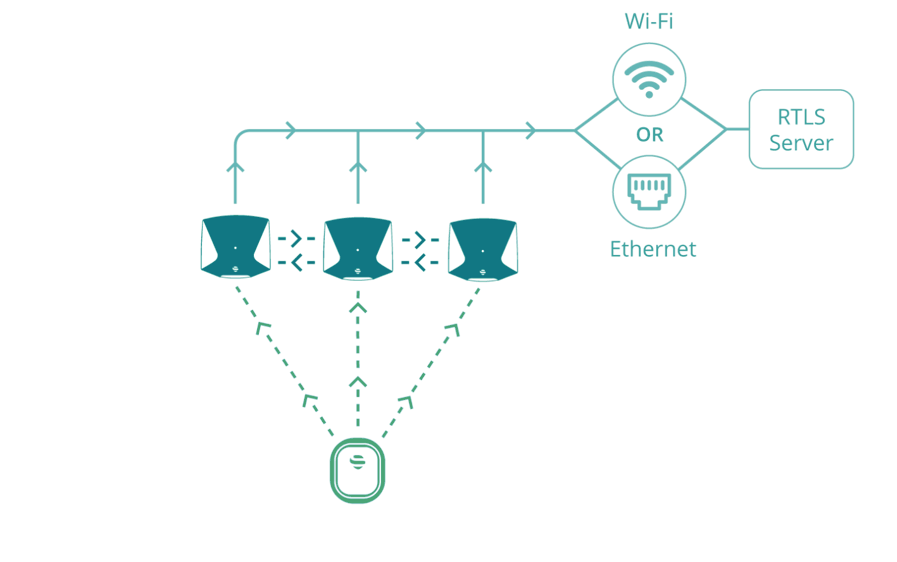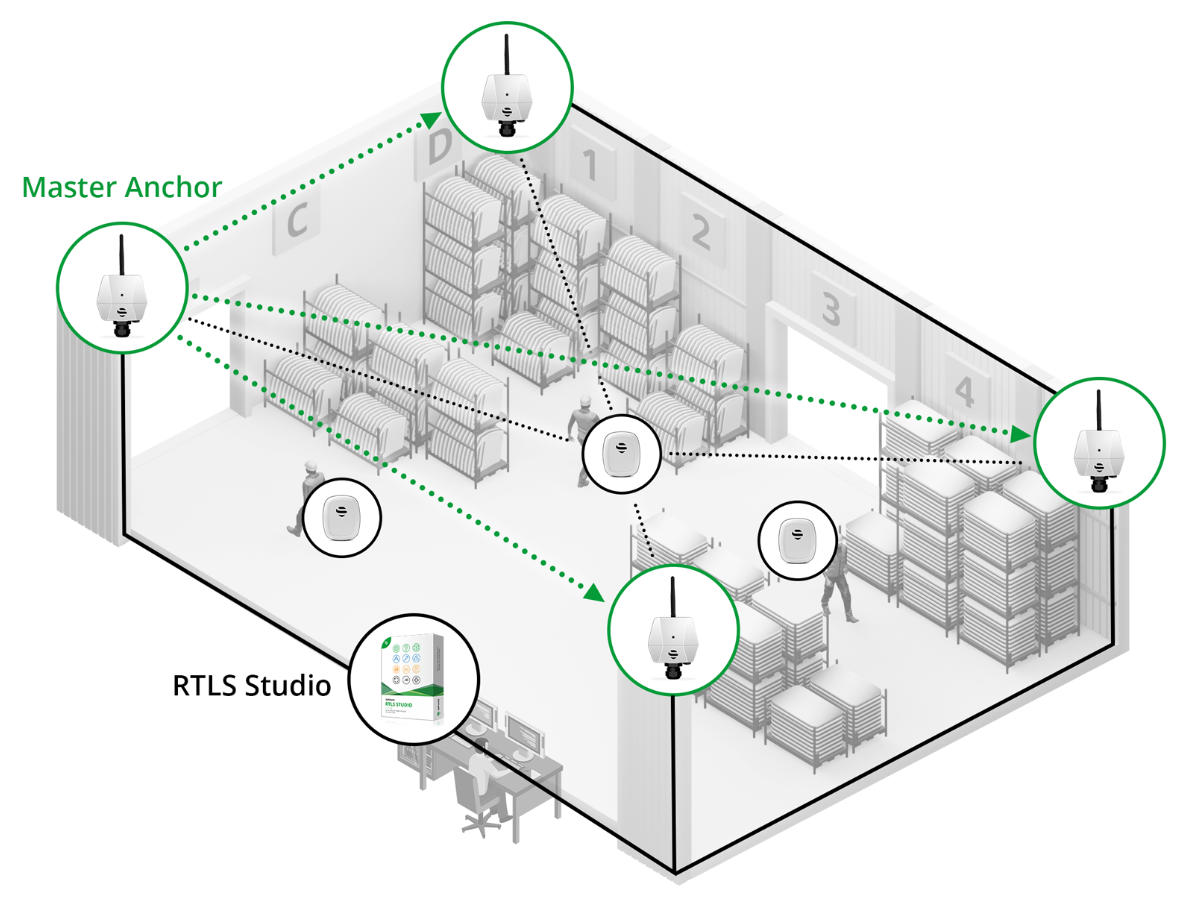RTLS System Communication
RTLS Communication Layers
The UWB communication includes two communication layers. The Blink layer and the Sync layer.
Blink Layer (Tag → Anchor)
The tags send UWB messages called blinks to the anchors. The anchors then receive these UWB blink messages, process received information, and send information to the RTLS server. RTLS Server then calculates the precise position based on that UWB blink message. This type of communication between the anchors and tags is called blink, and the communication layer is called the blink layer. The blink layer is indicated with black dotted lines in the figure below.
Sync Layer (Master Anchor → Anchors)
The second type of communication is realized between the anchors. In order to precisely estimate the position, the anchors need to be accurately synchronized. This is a goal of the so-called master anchors within the system. The server periodically sends information to these masters that should synchronize neighboring anchors. The masters then send synchronization messages via UWB to the slave anchors in their vicinity. This type of communication between the anchors is called Sync, and the communication layer is called the Sync layer. The sync layer is indicated with green dotted lines in the figure below.
In table below you can see more details like what medium is used and what is purpose of the specific communication between devices:
Data generated by devices
Following table holds the details regarding Sewio hardware products and the data they generate over time. No data generated by Sewio hardware falls under GDPR, however this data falls under EU Data Act.
| Data | Tag | Anchor |
|---|---|---|
| Location | Tag generates up to 500 bytes per second of raw location data, used for location calculation, not stored. | Anchor generates up to 1 Megabyte per second of raw location data, used for location calculation, not stored |
| Configuration | Tag stores its configuration locally, it can be accessed by end customer using Sewio Leonardo Configurator - Apps on Google Play | Anchor stores its configuration locally, it can be accessed by the end customer through the anchor website. |
| Telemetry | Tag generates up to 100 bytes per second of telemetry data (such as battery charge level) and sends it to server without storing locally. End users can access the data in myRTLS. | Anchor generates up to 5 Kilobytes per hour of aggregated telemetry data (such as temperature) and sends it to server without storing locally. End users can access the data in myRTLS. |


